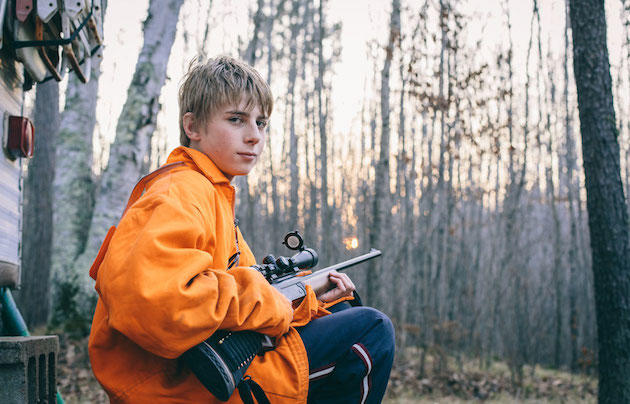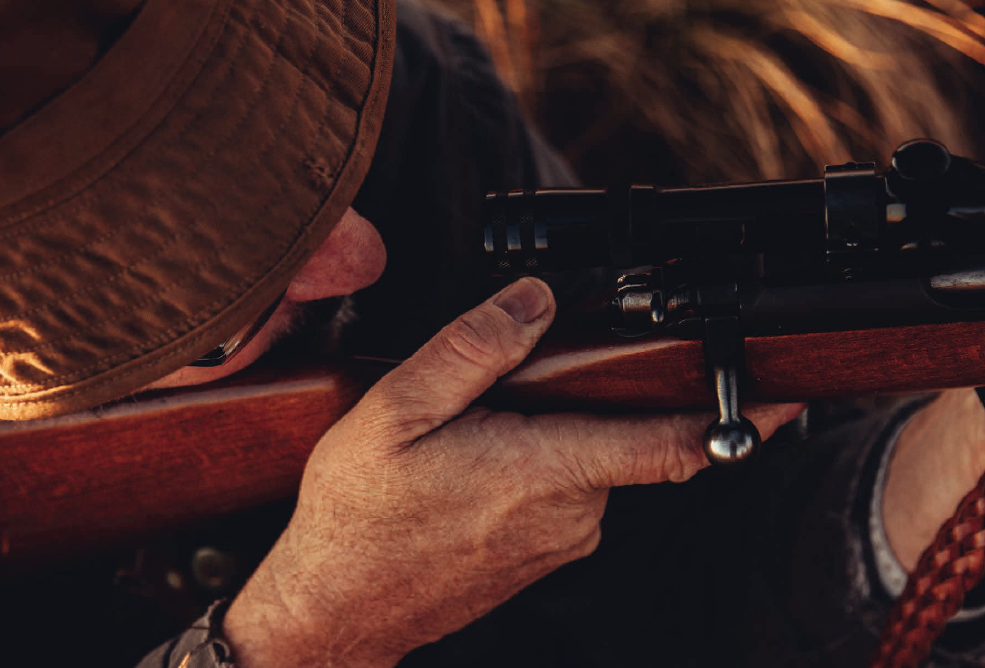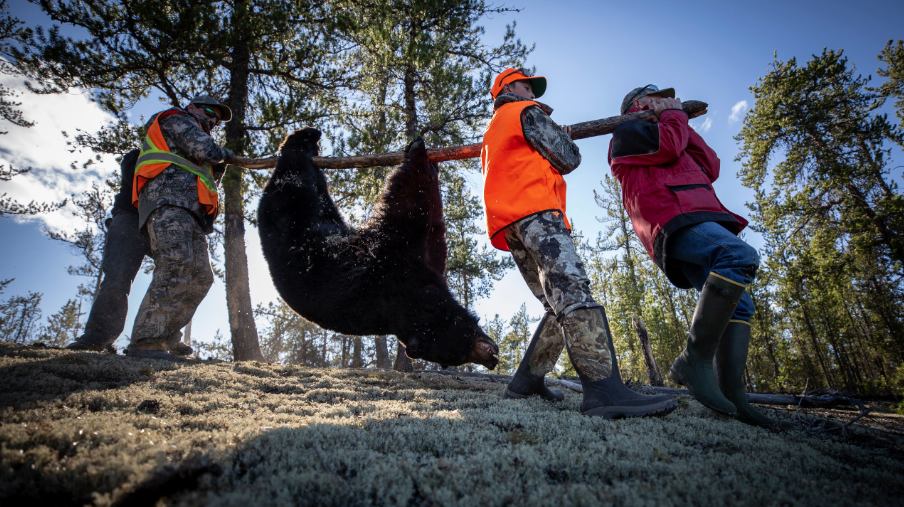If you have been around firearms long enough, the chances are good that you have witnessed, committed or even been the unlucky recipient of unsafe hunting practices or careless firearm handling.
The cottontail rabbit zig-zagged toward me across the freshly powdered snow through a thick tangle of red twig dogwood. I knew my hunting partners were ahead of me, so I held my fire. But just as the rabbit darted past me, the snow suddenly erupted around my legs and a shotgun rang out. I instantly felt my muscles spasm as the pellets ripped into my lower legs.
“I’m hit!” I yelled, fearing there could be a follow-up shot in my direction. I immediately knew that this was not the work of one or two stray pellets and that we now had a medical emergency on our hands—mine.
I heard my hunting buddy yell from somewhere in front of me, “Oh my God, I think I just shot Dave.”
We were hunting in the dense swamps of northern Michigan and had lost sight of each other when the accident happened. I was helped out of the swamp and we drove for nearly an hour to reach the closest emergency room. The rabbit, incidentally, continued past unscathed.
In the United States, about 16 million hunters will take to the woods, fields, marshes and mountains this year in pursuit of both large and small game as well as various species of birds.
Despite the fact that those hunters will range widely in both age and experience, hunting actually remains a comparatively safe sport. What’s more, statistics compiled by most fish and game departments around the country suggest that it is getting even safer.
You are actually 3.6 times more likely to be injured playing golf and 33 times more likely to be injured while riding a bicycle, than hunting. (Reference: National Shooting Sports Foundation). In 2013, there were 7,302 hunting-related firearm injuries across the U.S. This amounts to 45 injuries for every 100,000 hunters and means that you have less than a .05 percent (1/20 of 1 percent) risk of injury while hunting. That being said, I can assure you that this remarkably low statistic is of little consequence if you happen to belong to the 0.05 percent group!
In some states, such as Pennsylvania, the incidence of hunting-related firearm accidents and fatalities has dropped 80 percent over the past 50 years.
The two most important reasons why hunting is such a comparatively safe pursuit have been the implementation of hunter safety programs in the late 1950s and early 1960s, and the use of hunter or blaze orange clothing, which is now required in most states.
The National Rifle Association, National Shooting Sports Foundation and state-affiliated hunter education programs have all played important roles in the instruction of new hunters and developing a culture of firearm safety while afield.
More recently, youth apprenticeship and adult mentorship programs have also been developed in a number of states. These programs provide novice hunters with an opportunity to learn and practice safe hunting and firearm handling in the field while under the tutelage of an experienced hunter.
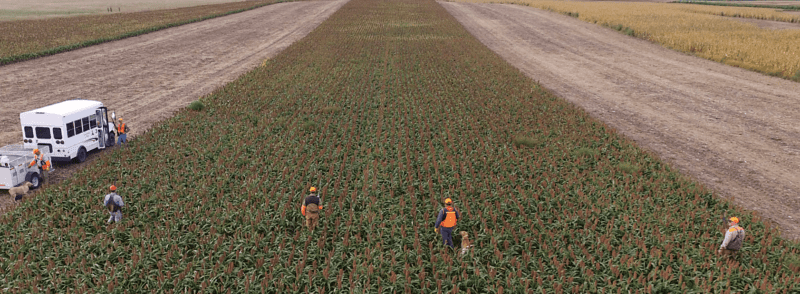
Safe handling of shotguns is critical in situations involving a number of shooters. Here, a line of pheasant hunters and their dogs work a strip of cover at Tumbleweed Lodge in South Dakota. Our thanks to Michael Bollweg for sharing his drone photograph.
Hunting accidents involving firearms are classified as being either self-inflicted or two-party incidents. While the proportions of these types of accidents vary somewhat from state to state and year to year, they are roughly equal in occurrence. The majority of self-inflicted injuries stem from careless gun handling, including triggers catching on objects, discharges during loading/unloading, dropped firearms, removing/placing a loaded gun in a vehicle, stumbling or falling with a loaded gun and, lastly, barrel obstructions or the use of incorrect ammunition.
Two-party accidents most often involve a friend or relative from the same hunting party and typically occur at very close range—often less than 50 yards. The most common contributing factors are the victim being mistaken for game, being out of sight of the shooter or being within the line of fire of the shooter. It is important to note that in the overwhelming majority of these accidents, the victim was not wearing hunter orange. My own accident, which occurred before wearing hunter orange was required, was a textbook example of a two-party accident.
Age and experience also play a role in hunting accidents, but not to the extent you would imagine. Nearly half of all hunting-related firearm accidents happen among hunters who are 24 years and younger. The remaining half tends to occur primarily in the 25 to 54 age group and most individuals involved in those accidents had 10 or more years of hunting experience.
If you have been hunting long enough or been around firearms for a long enough period of time, the chances are good that you have witnessed, committed or even been the unlucky recipient of unsafe hunting practices or careless firearm handling. In addition to my accident, I have been panned with the muzzle of firearms, had shots fired so close to me that my ears rang, had spent shot fall on me and experienced two accidental discharges, once when a trigger mechanism failed and once when a heavy winter glove I was wearing caught the trigger of my rifle before I was ready to fire.
The majority of hunting related incidents are mishaps that by luck or divine intervention failed to cause injury or damage and consequently were never reported. In the healthcare industry, we look at near misses because they are only a step away from a true medical catastrophe, and only by heading off the near misses can we help to eliminate or at least reduce actual medical errors. Much the same can be said for hunting-related firearm mishaps. Any infraction, regardless of who it is or how seemingly insignificant, warrants an immediate comment. Complacency is the enemy of the experienced and a mistake by someone who has hunted for 50 years is just as deadly as one committed by someone on their first outing.
While the State Police questioned my hunting partner to rule out foul play, the ER physician removed my felt-lined boots and wool pants as No. 6 lead shot rolled across the floor of the exam room. The heavy boots and the thick wool clothes I was wearing had stopped a lot of pellets, but my legs were swollen with blood and there was a real concern that I would need to go into surgery. In looking for other wounds, we discovered that a single pellet had gone almost completely through my right index finger and would later have to be removed surgically. Subsequent examination of my shotgun revealed that a handful of pellets had also buried themselves deeply into the stock of my shotgun where the gun had been held across my body. Miraculously, none of the pellets struck my chest or abdomen, which could have been fatal.
I spent the next several days in a small northern Michigan hospital on antibiotics and a couple more weeks on crutches. In the end, I healed up just fine, but I carry those pellets as a reminder of that accident and to speak up when I see any unsafe gun handling and hunting practices, even though it may be a friend I have known all my life. I would rather deal with someone’s hurt feelings than with the consequences of another hunting accident.
There is always the mindset that it can never happen to you—until it does. Don’t forget, you may be perfectly safe, but if your hunting partner is not, you may be at the receiving end of an accident.
Preventing hunting-related injuries is as simple as following these ten basic safety commandments:
- Be certain of your target and what lies beyond it.
- Agree on safe fields of fire for yourself and hunting companions and never swing beyond your field of fire.
- Treat every gun as if it is loaded.
- Keep the muzzle pointed in a safe direction at all times.
- Keep your finger away from the trigger and the safety on until ready to fire.
- Unload firearms when not in use and leave the action open.
- Transport and carry firearms unloaded and cased when traveling to and from the field or practice range.
- Be sure the barrel of your firearm is clear of obstructions.
- Only carry and use ammunition appropriate for your firearm.
- Wear hunter orange while hunting for increased visibility.
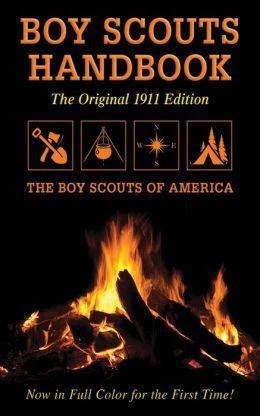 This is a full-color edition of the very first Boy Scouts Handbook, complete with the wonderful vintage advertisements that accompanied the original 1911 edition, Over 40 million copies in print!
This is a full-color edition of the very first Boy Scouts Handbook, complete with the wonderful vintage advertisements that accompanied the original 1911 edition, Over 40 million copies in print!
The original Boy Scouts Handbook standardized American scouting and emphasized the virtues and qualifications for scouting, delineating what the American Boy Scouts declared was needed to be a “well-developed, well-informed boy.” The book includes information on: The organization of scouting, Signs and signaling, Camping, Scouting games and Description of scouting honors.
Scouts past and present will be fascinated to see how scouting has changed, as well as what has stayed the same over the years.

